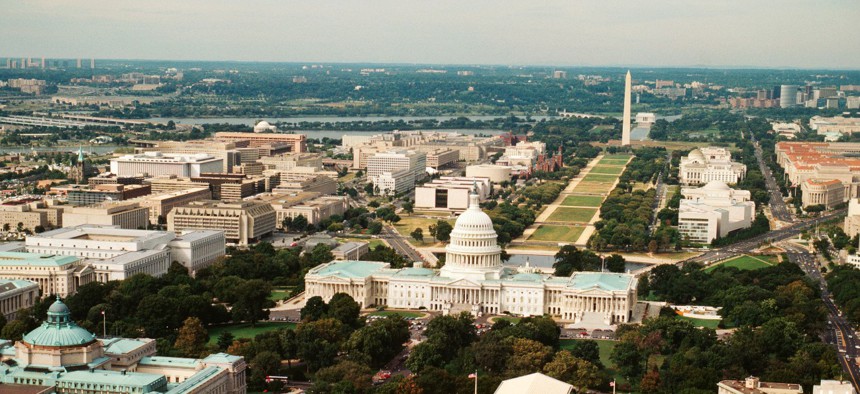
Agencies would need to seek approval for anything that did not meet the preferred, classical style. Glowimages / Getty Images
Lawmakers Want to Restore Trump’s Vision of ‘Beautifying’ Federal Buildings
Biden rescinded a similar executive order that Trump issued in his final days as president.
Republican lawmakers are looking to require federal agencies to maintain a classical building style, introducing legislation that would codify an executive order issued by President Trump and later rescinded by President Biden.
The Beautifying Federal Civil Architecture Act (S. 1943) would apply to all federal courthouses, agency headquarters, federal public buildings in Washington, D.C., and any federal public buildings that cost or are anticipated to cost over $50 million to design and build. Trump issued a virtually identical order just before leaving office, but Biden rescinded it shortly after being sworn in. In issuing the order, Trump said more modern and brutalist federal buildings were "unpopular," "unappealing" and "ugly."
If the General Services Administration wanted to approve a design for a federal building that does not meet the preferred classical style, the bill would require the agency to provide a detailed justification to the White House and Congress. The measure would establish the President’s Council on Improving Federal Civic Architecture––which would include government officials and outside members––that would identify buildings out of compliance with the preferred style and recommend renovations and remodeling to make them more aesthetically pleasing.
GSA would specifically have to lay out whether a non-compliant design was as “beautiful and reflective of the dignity, enterprise, vigor and stability of the system of self-government in the United States as alternative designs of comparable cost using preferred architecture.”
Sen. Marco Rubio, R-Fla., who introduced the bill, said his legislation would bring back the beauty that federal buildings had “lost.”
“Federal buildings physically embody our system of government and its institutions,” Rubio said. “Federal buildings should therefore reflect our government’s dignity, enterprise, vigor and stability while inspiring civic pride.”
The National Civic Art Society, a nonprofit that advocates for art and architecture in the classical style, said it supported the new bill as it did Trump’s executive order, though that policy was met with significant criticism in other circles. The American Institute of Architects said it was “appalled” by Trump’s order and celebrated Biden when he revoked it.
“Communities should have the right and responsibility to decide for themselves what architectural design best fits their needs,” American Institute of Architects CEO Robert Ivy said when Trump issued the order. The group added it “does not, and never will, prioritize any type of architectural design over another.”
Justin Shubow, the National Civic Art Society's president, said the bill would ensure the design of federal buildings "reflects the preferences of ordinary Americans.”
Sen. Mike Braun, R-Ind., who cosponsored the bill, said it would ensure the government constructed buildings as the nation’s founders desired.
“It’s time to right the ship when it comes to styling federal buildings, and have Congress declare what the Founding Fathers intended: that classical and traditional architecture should be the blueprint of all federal government buildings,” Braun said.
Rep. Jim Banks, R-Ind., introduced companion legislation in the House.







